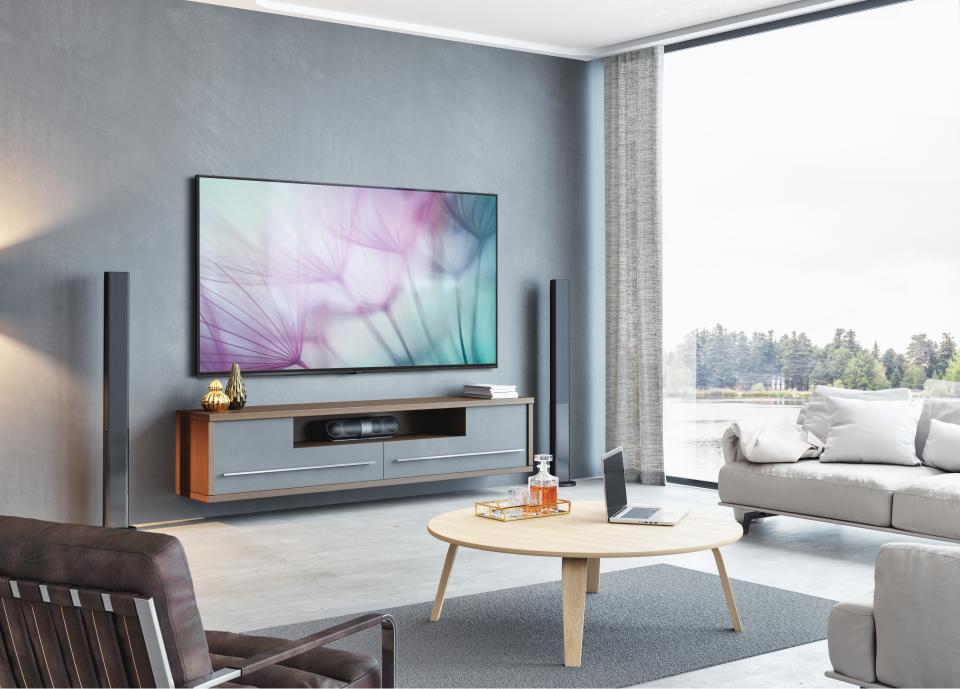8K TVs are coming, but don't buy the hype

ROME — If the 8,294,400 pixels of resolution on an Ultra High Definition television just don’t seem to convey enough detail, fear not: The electronics industry has heard your cry.
Even as UHD TVs, often called 4K TVs for their nearly 4,000 pixels of horizontal resolution, approach half of display shipments in the U.S., set manufacturers have been stepping up their demos of 8K sets that, with their 7680-by-4320 resolution, pack in a full 33,177,600 pixels.
And Sharp is now expanding its distribution of one such set, the 70-inch LV-70X500E. Following its October debut in China and subsequent arrivals in Japan and Taiwan, this 8K display will go on sale across Europe at the end of April for €11,199 — about $13,800 at current exchange rates. Sharp hasn’t announced anything about U.S. availability, but during a conversation at CES in January, Sharp marketing vice-president Rey Roque said an American price for this set would be in the “low five figures.”
That, apparently, is supposed to be a reasonable price for a set that supports a video format that offers next to nothing to watch, that can’t be streamed on most broadband connections or fit onto Blu-ray discs and which can’t even be properly appreciated unless you get a set too big to fit in many living rooms.
An upsell based on upscaling
Sharp laid out its pitch for 8K TV last week at the IFA Global Press Conference, a spring event hosted by the organizers of the IFA electronics trade show that runs in Berlin each summer. One thing it doesn’t include: Having lots of video to watch in 8K.
Sascha Lange, Sharp’s European vice president for marketing and sales, instead emphasized how this and other 8K sets could electronically upscale 4K content (although even that remains scarce, especially for live programming like sports) and could show still images at their full resolution.
Actual 8K video will be a small part of the picture at first. The Japanese broadcaster NHK has been testing 8K transmission over the air as well as via cable and satellite, but it stands alone in that respect.
Blu-ray discs now support 4K video, but they won’t be able to accommodate 8K, predicted Mark Vena, senior analyst at Moor Insights & Strategy. For that, you’d need “really high-density drives,” he said.
Streaming allowed 4K video to find an audience without the cooperation of cable and satellite firms. But while, for instance, YouTube has offered 8K video since 2015, video at that resolution demands far faster download speeds than 4K streaming.
The highlights reel playing on a demo unit of Sharp’s 8K set required 300 megabits per second of bandwidth to stream, said Adrian Wysocki, group product manager at UMC, the Sharp-owned firm that builds TVs in Poland for the company. He suggested in a conversation Friday that more efficient formats could cut that to 100 Mbps.
Only 23.2% of U.S. fixed-broadband connections hit that speed at the end of 2016, according to to the Federal Communications Commission’s latest report on internet access services.
Wysocki added that an 8K display can also show four 4K streams at once, a possibility Sharp demonstrated at CES in January. He allowed that Sharp’s 70-inch set was not really a product for average consumers but would definitely appeal to the right sort of videophile.
“If you’re a freak and if you have enough money, of course you will want to have this at home”
You’re going to need a bigger living room
Sharp also emphasized that 8K will make bigger screens possible — which is another way of saying that you’ll need giant screens to appreciate 8K’s extra resolution, much as 4K’s added pixels can’t be seen from most couches unless the screen is bigger than 50 inches or so.
“It enables larger screens at home,” said Sharp’s Lange during the presentation. “8K is the technological condition to start selling and enjoying more 70-inch-plus screens at home.”
But as set sizes increase, so do their costs, warned analyst Paul Gray of IHS Markit. Ultra-large TVs incur shipping, delivery and installation costs that don’t apply to smaller sets.
“Between 65 and 75, the volume of the box goes up by a factor of four,” Gray said, noting the extra reinforcement required for the larger display to survive shipment.
Installation of something that won’t fit in a car and may not fit through some doors adds to the expense. “It’s got to be delivered by two people, when the owner is in, and it’s probably gotta be installed by them,” Gray said.
Some people will probably buy this
The entire 8K concept — something that Sharp has been pushing since CES 2012 — can seem like one of the electronics industry’s more annoying exercises in fetishizing newness over convenience or cost. Think of Apple (AAPL) dropping the headphone jack, but with much larger price tags all around.
But 8K probably will draw some shoppers. IHS Markit predicts that China will be an early success for it, thanks to an enormous and expanding market of early adopters of technology. The firm projects 8K will account for 9% of the display market there by 2021, versus just over 2% in North America.
And a flood of 8K content may not be necessary for 8K to secure a niche as a luxury product if just bringing more pixels to the party can suffice. Or as Gray summed up: “It’s numbers marketing.”
(Disclosure: The conference organizers covered most of my travel expenses, along with those of a large group of journalists and analysts.)
More from Rob:
Email Rob at [email protected]; follow him on Twitter at @robpegoraro.
